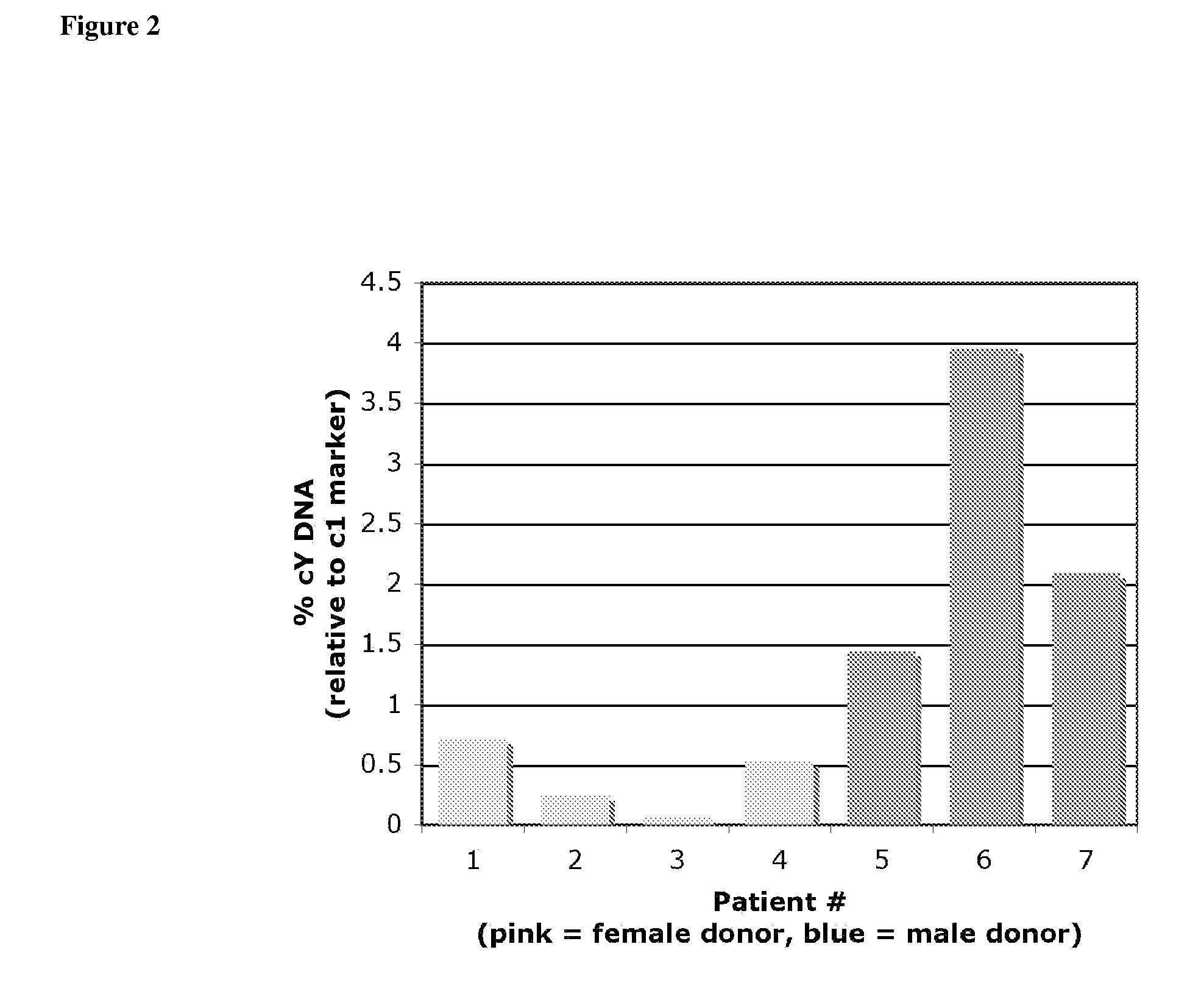Non-Invasive Diagnosis of Graft Rejection in Organ Transplant Patients
a graft and patient technology, applied in the field of non-invasive diagnosis of graft rejection in organ transplant patients, can solve the problems of life-threatening situation, difficult and expensive monitoring of patients for graft rejection, and current surveillance methods lack adequate sensitivity
- Summary
- Abstract
- Description
- Claims
- Application Information
AI Technical Summary
Benefits of technology
Problems solved by technology
Method used
Image
Examples
example 1
Detection of Donor DNA in Organ Transplant Recipients
[0135]Using digital PCR as described before (Warren, L., Bryder, D., Weissman, LL., Quake, S. R., Proc Natl Acad Sci, 103, 17807-17812 (2006); Fan, H. C. Quake, S. R., Anal Chem, 79, 7576-7579 (2007)), the amount of chromosome Y and chromosome 1 markers were quantitated for female patients receiving either male or female hearts in plasma samples taken at the same time that an endomyocardial biopsy determined a grade 3A or 3B rejection episode.
[0136]While blood transfusions / male child birth are known mechanisms to have detectable cY signature in a female patient, FIG. 2 shows that the overall levels of cY are uniformly higher for patients receiving hearts from male donors. No significant chromosome Y signal from four control female-to-female transplant patients was detected. On the other hand, 1.5-8% total genomic fraction for chromosome Y signals was observed at the rejection time points for three male-to-female transplant patient...
example 2
Genotyping of Transplant Donor and Transplant Recipient
[0140]FIG. 5 shows a general strategy to monitor all transplant patients. Genotyping of donor and recipient can establish a single nucleotide polymorphism (SNP) profile for detecting donor DNA. Shotgun sequencing of cell-free DNA in plasma, with analysis of observed unique SNPs, allows quantitation of % Donor DNA in the sample. While any single SNP may be difficult to detect with so little DNA in plasma, with hundred of thousands or more signals to consider, high sensitivity should be possible
[0141]Libraries of mixed genotypes can be created using two CEU (Mormon, Utah) HapMap lines. Approximately 1.2 million total variations between these two individuals were already established using existing genotyping platforms (e.g., Illumina Golden Gate). Usable SNPs must be homozygous for the recipient and ideally homozygous for the donor as well. Usable SNPs comprise: (i) approximately 500,000 heterozygous donor SNPs (count will be ½ of ...
PUM
| Property | Measurement | Unit |
|---|---|---|
| pore sizes | aaaaa | aaaaa |
| polymorphic | aaaaa | aaaaa |
| nucleic acid array | aaaaa | aaaaa |
Abstract
Description
Claims
Application Information
 Login to View More
Login to View More - R&D
- Intellectual Property
- Life Sciences
- Materials
- Tech Scout
- Unparalleled Data Quality
- Higher Quality Content
- 60% Fewer Hallucinations
Browse by: Latest US Patents, China's latest patents, Technical Efficacy Thesaurus, Application Domain, Technology Topic, Popular Technical Reports.
© 2025 PatSnap. All rights reserved.Legal|Privacy policy|Modern Slavery Act Transparency Statement|Sitemap|About US| Contact US: help@patsnap.com



